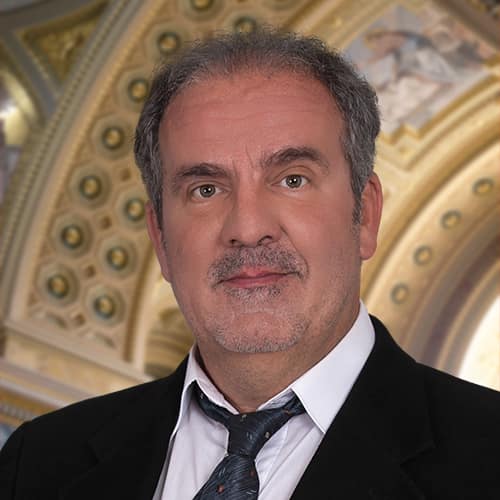In this series, we invite our readers to get know our artists. Beyond the biographical elements, personal musical experiences and habits give you insight into the scenes.
After graduating at the Budapest Conservatory of Music, You continued your studies at the Liszt Ferenc Academy of Music where you graduated in 1988 as a trumpet artist. You studied baroque trumpet, cornetto and bass generale at the department of Early Music at The Hague Royal Conservatory in The Netherlands. Tell me about the student years, what attracted you the most? Who were your masters who had a big impact on you?
My parents are musical as well, they’re singing and whistling artists, they have been inspired me much as a child to add something to the family noise. They felt that I should go to a primary music school and then a regular music school at the right moment. My mother was destined to be a horn artist, but because of my skinny body, fits more to be a trumpet, they suggested me at the music school. I stayed with this instrument, my charismatic teachers made me love the trumpet.
Trumpetist, soloist and chamber musician, performing with many European early music ensembles, and making recordings. Regularly you performs in European countries (Austria, Germany, Italy, France, Spain, Belgium, Netherlands, England) as well as in Israel, Argentina and Brazil. The repertoire is wide enough, what are the most decisive experiences and performances?
The value and richness of my activities depends on me in the given environment. Who are the colleagues, who the conductor is, how the site is related to the program of the given concert, etc. It’s always a pleasure to play in Italy, I like the music of the old times, in Italy is clearly guaranteed. The Vatican, the Venetian churches, and the St. Stephen Basilica in Budapest are among my great experiences where the trumpet sound can really soar in the imposing space.
Since 1989 you’re a member of Pro Arte Serenissima Italian Chamber Orchestra. How did you get in touch with them? In practice, what does the membership looks like? Are you going out for rehearsals and actions? How often do you play with them?
I perform with various chamber orchestras across Europe, Pro Arte is just one of them, but an analogy with the others. Membership here doesn’t follow the practice of symphonic orchestras, the result is completely out of bureaucratic, rather friendly and professional work. If I play well and my company is pleasant – which is an important factor for them – they will call me back. With my Swiss, Italian, Czech, Austrian and Dutch ensembles I have about thirty performances a year, which are 3-4 day trial concert projects.
In 1991 you held a famous instrumental performance at the Hungarian National Museum. Tell me about it. Where does the idea coming from? How was the research? Was it successful?
In 1991 I held my first music history lecture, which was requested by museologists from the National Museum’s musical collection. Perhaps the success was due to the fact that the preparation and the performance were also an entertainment for me. The trumpet, is a musical-cultural-historical fossil, like the old organs or other old instruments. It is a wonderful joy to discover relationships between music and the flow of history.
In 2011 you held a major concert and masterclass at the Brazilian Campos de Jordao Festival. What was your experience about teaching and acting in this completely different cultural environment?
I had masteredclasses in Argentina, Brazil and South Korea as well. The interest and enthusiasm which they were received was touching, and they took on a significantly different musical performance. Since then, several former overseas students have studied at European colleges, mentioning their participation in my courses.
In 2004 the Hungarian Cultural Heritage Ministry awarded you with a Bálint Balassi commemorative medal. How did this effect on you?
I received the honorable Balassi medal for the search for Hungarian early music and for the performance of the works, for which I am very grateful to László Virágh. He is a major researcher in this field. Since then, I have been involved in the reconstruction of many musical works.
What’s your experiences of Cathedral Organ Concerts? How is the energy of the audience with the fascinating, charismatic interior of the Basilica?
The performances of the Cathedral Organ Concerts gives me not only the aesthetic experience – musical and visual as well – but also an opportunity to interpret the musical works that are rarely given: every time to formulate a wonderful piece of music, our colleagues – our organists – are impressive creators!
How do you prepare for the concerts, do you have custom habits?
My most important preparation for the concerts is to get to the action in time – that is, to fight with transport. I live in Szentendre and it’s not easy to get anywhere from there…
What are your next challenges, concerts and performances in the near future?
This week I had a solo concert in Vienna, then I played in the Budapest Bach Week. Soon I going to Hallstatt and then to the Czech Republic for a Handel concert.

